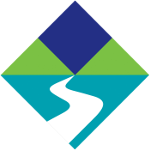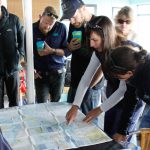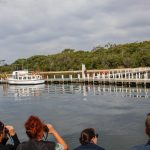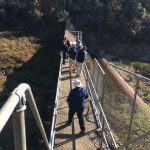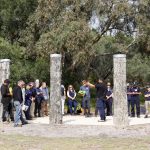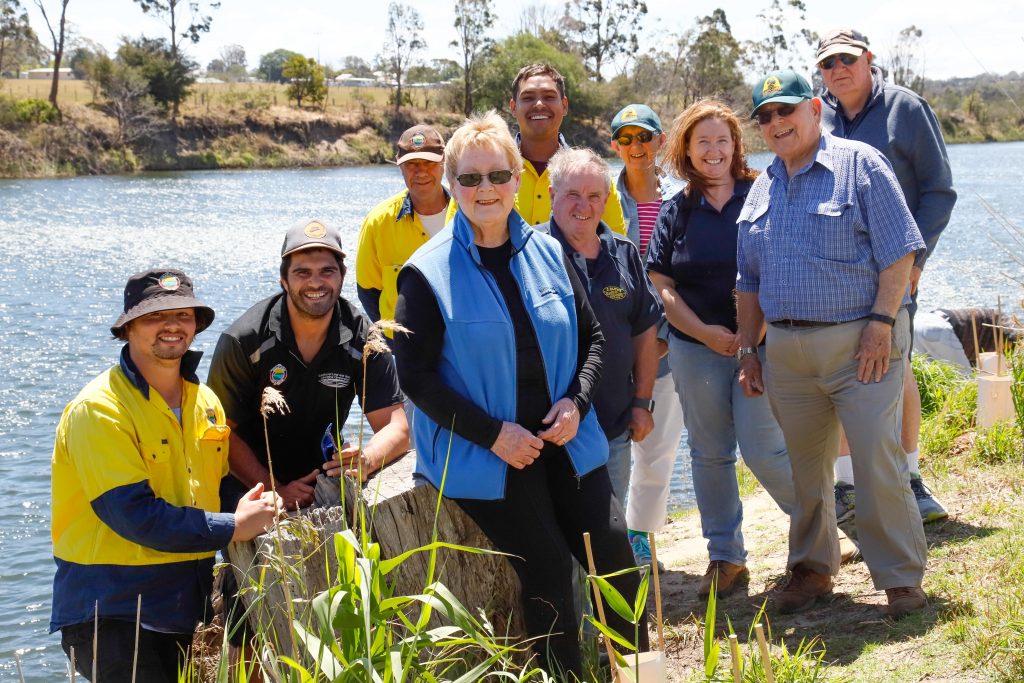
The Twin Rivers Community Group is proving just what can be achieved through hard work and determination, working with a number of partners to improve public access for recreational anglers on the banks of the Tambo River.
In partnership with the East Gippsland Catchment Management Authority, Gunaikurnai Land and Waters Aboriginal Council (GLaWAC), Nicholson River Landcare Group, DELWP and the East Gippsland Shire, has improved the amenity of five popular fishing spots close to Swan Reach.
Graeme Dear, CEO of East Gippsland CMA said, “the project, funded through a Regional Riparian Action Plan Angler Grants from the Victorian State Government is helping community get more involved in waterway works.”
Marion Dawson project managed the works and knows that the Tambo is a very popular spot for recreational anglers targeting bream and understands the importance of a healthy river to attract anglers and the fish they’re looking to hook.
“We’ve been working to keep access to our local fishing platforms clear and accessible while planting native seedlings to improve stability and encourage biodiversity on the riverbanks.” said Ms Dawson.
“It’s been a great effort from everybody and a very positive team environment to work in. We want to thank our partners for all of their support in particular to the GLaWAC crew who have shared their knowledge and to the volunteers who regularly use their water trailers to keep the seedlings alive.”
“A healthier river system means better conditions for fish to thrive and more opportunities for anglers who like to throw a line in.”
The East Gippsland Catchment Management Authority (EGCMA) has been working together with DELWP and the Moogji Aboriginal Council to undertake weed control on the Deddick, Bonang and Brodribb Rivers.
Community members in Tubbut, Goongerah and Bonang have identified emerging high priority weeds along the local waterways which would quickly spread downstream if left untreated.
The partners have controlled Inkweed on the Brodribb around Goongerah and English Holly below the Bonang Township. The removal of Privet around Tubbut compliments previous works by DELWP to improve river health.
“It’s important to work together with our partners to achieve the best results for our waterways, from top to bottom,” said Chris Anderson, Project Officer with DELWP.
“Controlling weeds on our waterways is a significant part of the Authority’s works program”, said Graeme Dear, CEO of the EGCMA. “This project supports the State Governments Water Plan for Victoria seeking to improve the health of waterways and catchments throughout the state.

The East Gippsland Catchment Management Authority (EGCMA) hosted members from the DELWP Our Catchments, Our Communities (OCOC) team recently when they visited the region to learn about the progress of two projects funded by the Victorian Government’s $222 million investment to improve the health of the state’s waterways and catchments.
The EGCMA is working together with landholders, Gunaikurnai Land and Water Aboriginal Corporation (GLaWAC), community and partner agencies in the Swifts Creek / Ensay area to deliver a coordinated approach to looking after the Tambo catchment. The works have included fencing off stock access to the Tambo River, controlling weeds and planting native seedlings to encourage revegetation.
Also, at Skull Creek near Lindenow on the Red Gum Plains, Greening Australia is working closely with ten landholders to exclude stock from the creek, control rabbits and plant native seedlings. This project involves GLaWAC who have undertaken a cultural heritage survey on the site while their NRM crew are helping to deliver the weed control and planting. Lindenow and Lindenow South Primary schools have also been regular visitors with multiple excursions to help with revegetation and to learn about the cultural and environmental importance of the waterway.
Luke Murphy from DELWP said “It’s great to see so many community members involved in the projects. It’s nice to be able to visit the region and see the funds put to good use.”

The East Gippsland Catchment Management Authority (EGCMA) last week played host to staff of seven Catchment Management Authorities from across the state as part of the East Gippsland CMA Knowledge Sharing Forum.
Members of the West Gippsland, Corangamite, Wimmera, Goulburn Broken, North East and North Central CMA’s gained an understanding of East Gippsland’s unique natural environment and the challenges and opportunities in maintaining and enhancing the health of our catchments.
The group visited the Mitchell River Silt Jetties, the mouth of the Tambo River, the Nicholson Dam and took a boat trip to view works across the Gippsland Lakes. EGCMA partners Birdlife Australia, DELWP, Friends of Beware Reef, Gippsland Ports, Greening Australia, Gunaikurnai Land and Waters Aboriginal Corporation (GLaWAC) and The Marine Mammal Foundation, all spoke passionately about their respective projects.
A particular highlight was the smoking ceremony performed by GLaWAC JM Ranger Supervisor, Grattan Mullet Jnr at Sperm Whale Head and the opportunity to learn about the joint management of ten parks and reserves by GLaWAC and Parks Victoria.
“This event was a great opportunity to showcase our partnerships throughout the region.” said Becky Hemming, acting EGCMA chief executive officer. “Sharing of knowledge and experiences with CMA staff from around the state will contribute to better relationships and a better understanding of how to improve the health of our rivers and waterways.”

The Gunaikurnai Land and Waters Aboriginal Corporation (GLaWAC) NRM crew have been busy at the mouth of the Tambo River recently, undertaking a fencing project at the popular site.
Working in partnership with the EGCMA and DELWP, the works will establish clear public access points to the well known fishing spot.
These works are part of a coordinated effort to improve the health of the Tambo River together with public access and amenity of five popular sites from Ensay downstream to the mouth of the river.
Daniel Miller, On Country General Manager at GLaWAC said “Caring for country is one of the core roles of GLaWAC. Our NRM team are proud to be working on country in partnership with DELWP and EGCMA to achieve this common goal”.
“The Water Plan for Victoria encourages greater involvement of traditional owners in the management of our rivers.” said the acting EGCMA CEO, Bec Hemming. “Working together with DELWP and GLaWAC provides opportunities to build and share skills and cultural knowledge.”
The project is funded by the Victorian State Government as part of $222 million committed to improving the health of waterways and catchments in Victoria.
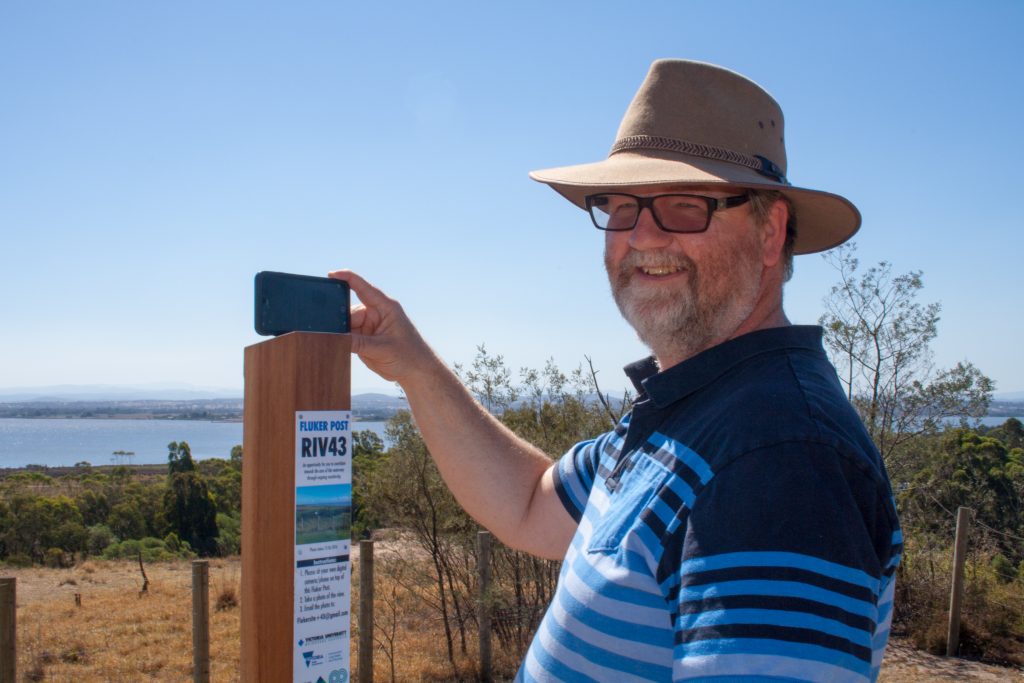
Citizen science in East Gippsland is now as easy as taking a photo thanks to the installation of five ‘Fluker Posts’ across the region.
The posts have been installed by the East Gippsland Catchment Management Authority (EGCMA) in partnership with DELWP and Victoria University to encourage the community to capture photos of the waterways and landscapes they love and enjoy.
Strategically placed on the highway bridge at Cann River, the West Cann bridge, Eagle Point Bluff and overlooking the estuary openings at Lake Tyers and Marlo, each post contains a a fixed photo-point where visitors are encouraged to place their smartphone, take a snap and send it to a listed email or upload it directly through an app.
The photographs can then be used to monitor the changing state of the environment over time. The Fluker Post Project allows the community to directly contribute towards the ongoing care and monitoring of our environment.
Graeme Dear, the EGCMA CEO, thinks that the fluker posts are a great way to get people thinking about the environment. “The Water Plan for Victoria encourages communities to get out and explore and enjoy the natural environment. This is such a simple concept but a fantastic way for people to get involved and provide valuable data at the same time.”
The project is funded by the Victorian State Government through the $30 million Regional Riparian Action Plan, which is part of the $222 million committed to improving the health of waterways and catchments in Victoria.
Local wildlife came out to say g’day last week as the EGCMA led a community ramble around the Red Gum Plains.
Folk who attended had the opportunity to travel to sites in Skull Creek, Bengworden, Forge Creek and Cobblers Creek to see the progress of works being undertaken by the EGCMA partners including Greening Australia, Trust For Nature, Gunaikurnai Land and Waters Aboriginal Corporation, Parks Vic, Gippsland Plains CMN and DELWP.
Wildflowers, a friendly echidna, birds and of course informative commentary from those in the know, were just some of the highlights of the tour. Project sites visited have been funded by the Victorian and Federal Governments to help maintain biodiversity of both plants and wildlife across the region.
The EGCMA would like to thank the community members, landholders and partner organisations who helped make this day such a success.
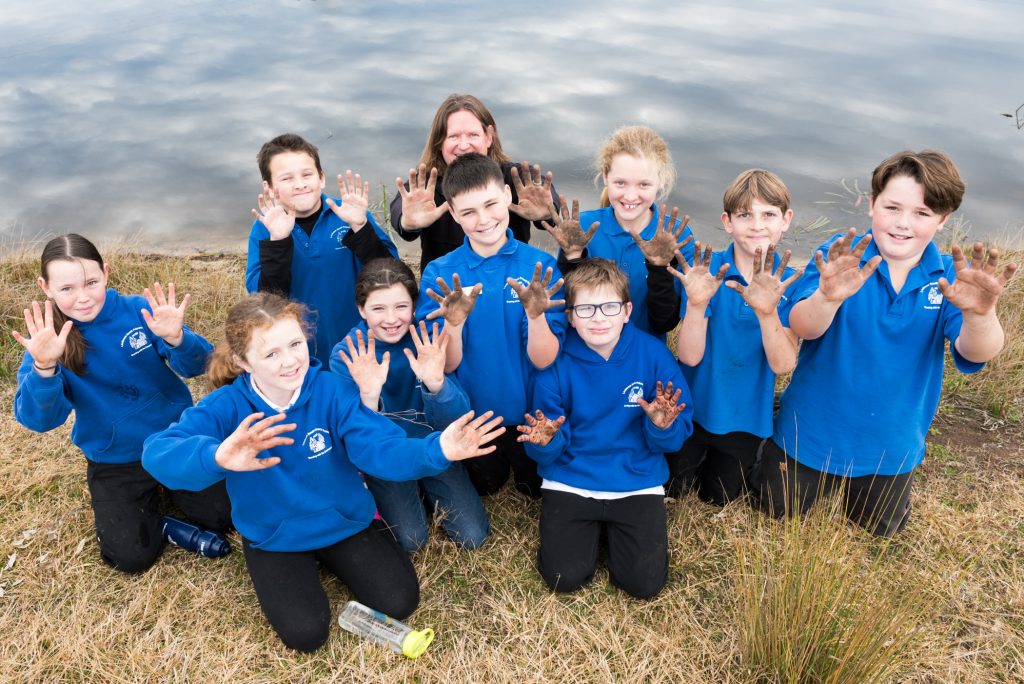
Lindenow South Primary School students were out to play their part in the restoration of the upper reaches of Skull Creek last week on an excursion to connect to community and country.
CEO, East Gippsland Catchment Management Authority, Graeme Dear said, “the project is funded under the Victorian State Governments ‘Our Catchment, Our Communities’ plan which is supporting greater community involvement in managing our catchments.”
Working alongside members of Greening Australia (GA) and the Gunaikurnai Land and Waters Aboriginal Corporation’s On Country crew, nineteen students planted five hundred of the endangered ‘Swamp Everlasting’ and ‘Woolly Waterlily’ plants, and even found time to investigate the critters that live in the waterholes with the team from Bug Blitz.
“It’s great to be able to involve schools and the community to understand the importance of these wetland environments” noted Martin Potts, Project Manager for Gippsland at GA. “It’s not just about planting trees but the habitat as a whole. The waterholes along Skull Creek are very significant to this landscape so we need to understand that it’s not just about water but what’s living in the water, what feeds off that and how it all interacts”.
“Anything that gets the kids out of classroom is a good idea and met with 100% enthusiasm.” said Principal Michael Walker, “It was a magical excursion. The kids were all excited and it’s just opened up a new chapter of biological sciences at the school.”



